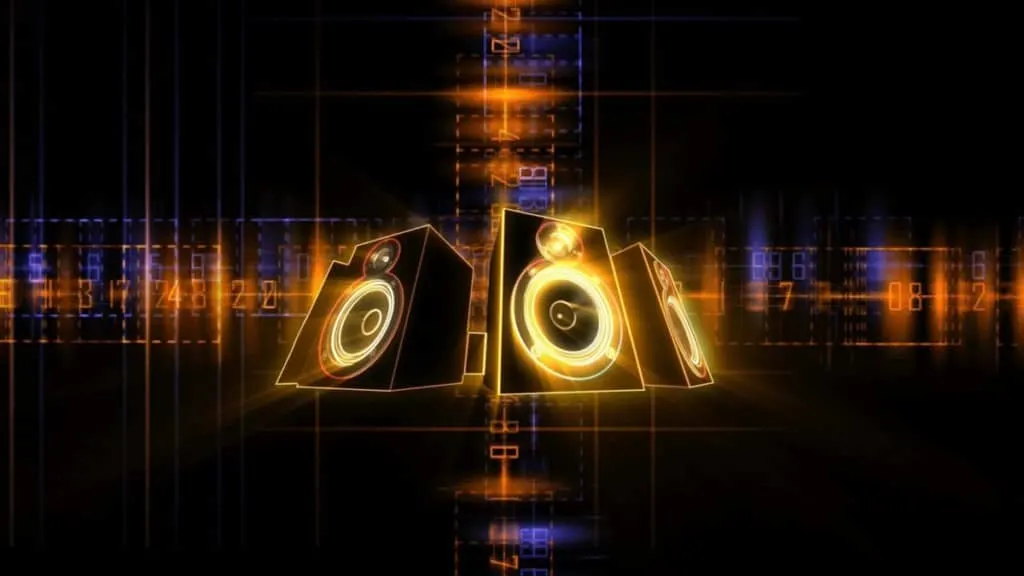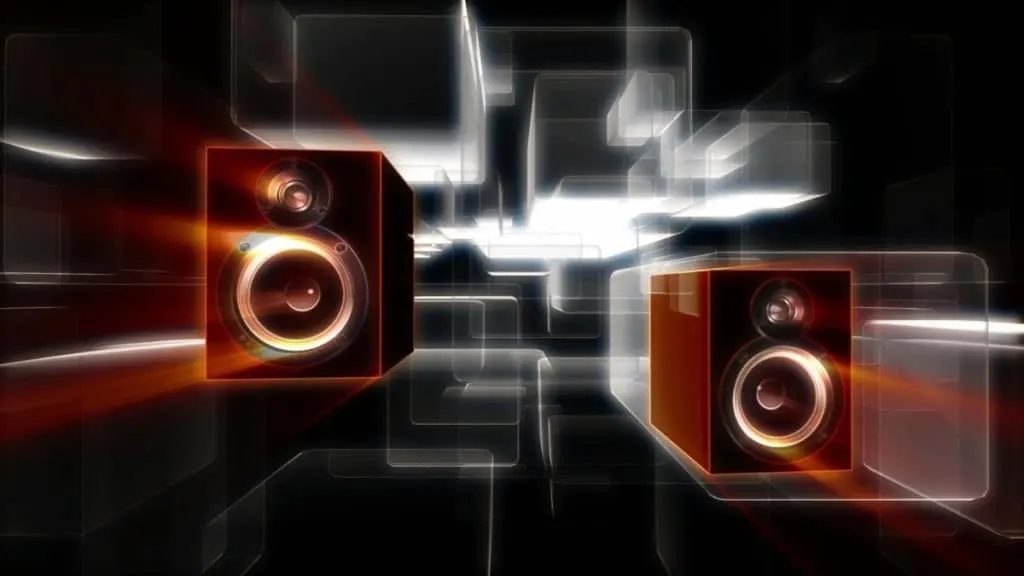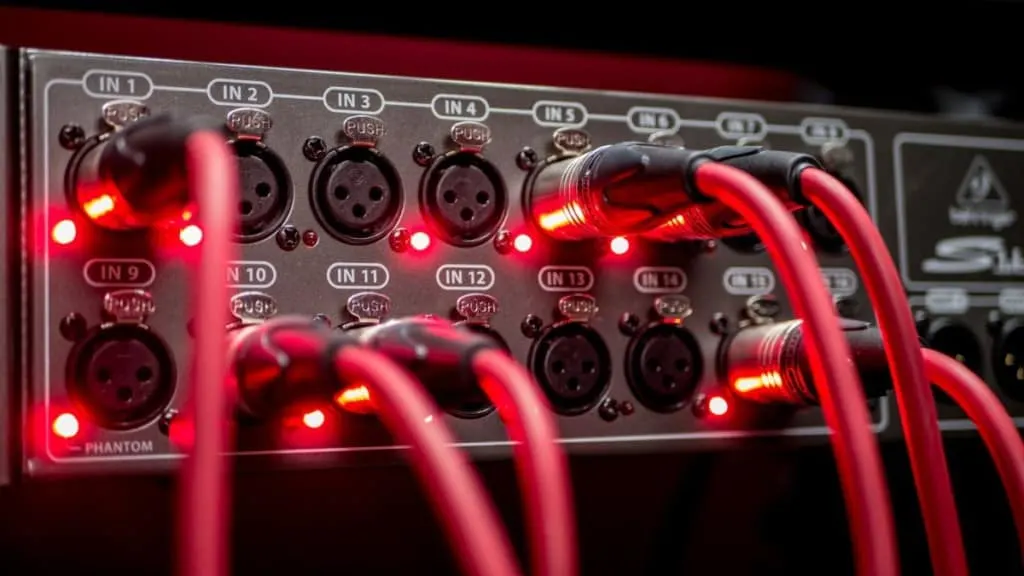Can you power a passive speaker with an active or powered speaker? Can you daisy chain a pair of passive and active speakers. Does the sequence matter? Will there be any problems like oversupply that can damage the speakers?
Can a powered speaker power a passive speaker?
You can combine and connect passive speakers with powered speakers using the standard connection (Red/Black) or bi-wiring using the appropriate twin cables. Powered speakers consume a lot of power, so people often hook up passive speakers to powered speakers to ensure that they don’t overwhelm the power supply.
To do this, you must understand the technicalities of each speaker in the chain. The safest way to use powered speakers and passive speakers together is by using a mixer. Get your signal output through a mixer with two outs. Run one pair to the powered speakers and run the other to the passive speakers.
Double-check the wire and power connections to ensure that they are tight and secure. After that, ensure that the power supply is sufficient to continuously power all the speakers connected to it. Lastly, make adjustments and fine-tune to get crisp audio from your setup.
In the next sections, we’ll outline this in more detail and cover some peripheral scenarios and common questions regarding passive and powered speakers.

Audio Speakers & Amplification: The Basics
Any musician, DJ, or artist will sooner or later encounter the challenges of amplification. A good understanding of the two basic speakers will be tremendously helpful in managing your performance.
To amplify music, we use two types of speakers: powered (active) and “not-powered” (passive) speakers. We’ll stick to common parlance and use the terms passive speakers and powered speakers to avoid any confusion. Both of these types are designed to amplify sound, but they have their own pros and cons which we’ll discuss briefly.
Passive Speakers:
Passive speakers are made from crossover components that split the audio signal. These signals need a separate amp to send the signal to the loudspeaker. Passive speakers can be used for home use, but they’re quite popular for restaurants, concerts, and large spaces.
Passive speakers are “un-powered”, this is an important highlight. They need to be hooked up to another component that can provide power. This could be a mixer, amp, or even a subwoofer. However, they aren’t capable of deriving power from just about anything.
For example, you can’t connect them to your phone or iPad with a 3.5mm jack. Firstly, they use “speaker wire”. Speaker wire can be the basic 12 to 16-gauge speaker wire cables like GearlT Pro16 or InstallGear 14-gauge.
These are reels of 30 to 200ft stranded wires in a red and black jacket to build a professional-grade speaker wire cable. You can pair these wires with the appropriate connector like spade tips, bent pins, or banana plugs to connect them to an amp/receiver.
Powered (Active) Speakers: Overview
Powered speakers are commonly called active speakers. They are “self-powered” speakers that have their internal power source. They have a compact and portable design. This makes them popular for home use i.e. Bluetooth-connected devices, computers, and home theatre systems.
The Klipsch R-51M, JBL 306P MKII, and Mackie Thump 15” are good examples of the types of powered speakers available. As they are simple and integrated units with their own power supply, they are quite hassle-free. They have their power source/built-in amplifier, and you simply need to plug them into a power outlet.
Viola! Compared to passive speakers, they are super-easy to set up. If you are a café owner or an artist/orator, you can find powered PA speakers that have built-in EQ, mic preamps, and power amps. This allows you to mix the sound easily and directly on to the powered speaker.
I have written an article on connecting power amps to active speakers. You can read it here. (Be careful!)

How To Combine Passive And Powered Speakers?
First, understand the technicalities of the passive and powered speakers involved. The main part is checking the impedance and the power requirement (voltage needed to power a speaker). You’ll find the information in the user manual (if you’ve lost it, you’ll get it online).
The next step is to get the right gauge and length of the wire required for your needs. You can measure the distance and prepare the wire and/or connectors if needed. To prepare the speaker wires, you need to strip the speaker wire/cable using scissors or wire-stripper.
Once the speaker wire is ready, you can make the connection to the terminals on the back panel of the speakers. For this, I recommend a standard connection using the wire terminals on the back panel of your passive and powered speakers.
Red (+) of the passive Speaker (L) is connected to the Red of the powered speaker (L). Black (-) of the passive speaker is connected to the Black (-) of the powered speaker (R). This way you’ll have a standard connection between a passive and powered speaker.
Take a look at this Youtube video that discusses active and passive speakers, this should help you decide which is the right option for you.
Daisy Chaining Passive and Powered Speakers
This is an advanced scenario that won’t apply to home users. But, if you want to daisy chain powered and passive speakers in a PA system, you need to ensure that you only use XLR cables. This ensures that all the pieces on the chain have inputs AND outputs of the signal. I highly recommend that you do NOT mix cables.
If you try to mix your cables, you’ll end up with a lot of noise and distortion in your system. All powered speakers have XLR connections but some amps may not have XLR ins/outs. If you don’t own an amp with XLR ins/outs, consider getting a new one.
If you can’t afford a new one, try to place your amp as the last piece in your signal chain. Placing the amp in the end may or may not work. If you still notice too much noise and/or distortion, then you’ll have to abandon the idea.
The safest way to use powered speakers and passive speakers together is by using a mixer. Get your signal output through a mixer with two outs. Run one pair to the powered speakers and run the other to the passive speakers.
Other Ways To Use Passive Speakers:
The first way to power passive speakers is to connect them to a power amplifier or mixer. For this, you’ll need good generative cables or power cords to set up your speakers. A good quality cable will ensure high fidelity and more audible sound.
If you are using your speakers as audio monitors, you can connect passive speakers to a computer/PC. All computers have an inbuilt amplification system. However, this won’t always work as sometimes you’ll experience pairing problems. Moreover, this won’t yield the best sound quality.
Trying to power a passive speaker without an amp will put your equipment at risk. Even if you successfully connect them to a PC, you should double-check if your computer has a built-in amplifier. You should also refer to the user’s manual to ensure that it won’t cause any damage.
Powering Passive Speakers: Options And Risks.
Passive speakers or loudspeakers are highly popular in big live setups for DJs, bands, and performances. Unlike powered PA speakers, passive speakers are not all-in-one systems. Here is a brief checklist of how to power passive speakers:
- You need an external power amplifier for passive speakers
- You need speaker cables to hook up passive speakers
- Note the speaker impedance rating and power handling capacity
Always remember the impedance and power of your speaker and calculate the combined impedance of the speakers. Incorrect matching between a passive speaker and other components will increase the risk of damaging the unit i.e. blown speakers.

Related Questions: Frequently Asked Questions: Passive/Powered Speakers
How To Power A Passive Speaker?
Think of passive speakers as “non-powered” speakers. They do not have a power supply.
You’ll notice that they have connectors (for wires) or jack sockets on the back panel of the speaker. You need to plug each passive speaker into an A/V (audio/video) receiver like the main unit of your home theater system or an amplifier.
Are Passive Speakers Better Than Powered Or Active Speakers?
Passive speakers require an amp or mixer to power them.
Furthermore, you will also need speaker cables to hook them up to the amp. So, right there you have some additional gear requirement. On the other hand, an active speaker (powered) system is by far the best PA system for orators or even small places of worship.
It spares you from any difficult choices related to compatibility and assembly. The design of powered speakers has integrated the best drivers, crossover, and amp that work well together.
Passive speakers lack such integration. However, passive speakers are not tied down to an amp. Passive speakers are more popular in larger venues where the sound is controlled by a mixer.
For instance, a passive speaker is easy to upgrade without replacing the whole PA system. Let’s say you’ve got a 4-channel amp with 2 passive speakers. You can just add two more speakers or replace the 2 you’ve got with better ones without the additional costs of upgrading other components.
Final Thoughts:
In conclusion, I hope this article has clarified the fundamentals of passive and powered speakers and how to combine them or daisy chain them.
Always refer to your manual and understand the technicalities of your speakers before you attempt any connection. If doubts persist, consult an experienced professional to prevent any untoward outcome that damages your equipment.
